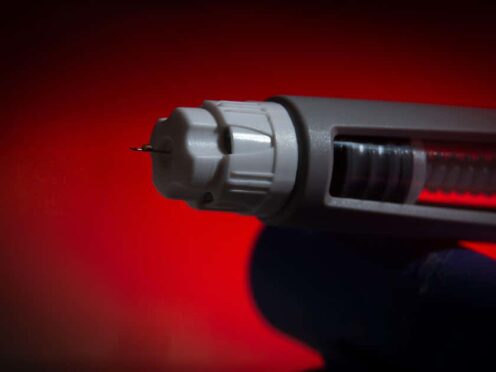There is “growing evidence” that weight-loss drugs could be effective in treating severely obese teenagers, an expert has said.
The medication acts “in exactly the same way” in younger patients as it does in adults, they claim, and while no evidence exists for use in patients under the age of 12, it “may be justified” in extreme cases.
The comments were made by Professor Louise Baur, an obesity paediatrician and professor of paediatrics at the University of Sydney in Australia, during a presentation at the International Congress on Obesity in Sao Paolo, Brazil.
Prof Baur, who is president of the World Obesity Federation, said: “Obesity among the youngest in our society is increasingly common.
“And just as we have realised with adults, obesity is not an acute-care, once-treated-always-cured disease.
“The use of the latest generation of obesity management medications could present a less invasive option for adolescents with more severe obesity.
“The evidence from various recent trials shows that these new medications, such as semaglutide, act in exactly the same way in adolescents as in adults, with a similar safety profile.
“One of the ways in which semaglutide works is by acting on brain appetite centres, promoting a sense of satiety, reducing hunger and encouraging a decrease in food consumption.”
Semaglutide – sold under the brand names Wegovy, Ozempic and Rybelsus – is a glucagon-like peptide-1 (GLP-1) agonist, a family of medications that help manage blood sugar.
Wegovy is recommended to help obese adults lose weight on the NHS by the National Institute for Health and Care Excellence (Nice).
Last year, NHS England revealed hospital admissions of obese youngsters under the age of 17 had tripled in a decade, growing from 3,370 in 2011/12 to 9,431 in 2021/22.
Globally, obesity rates among teenagers globally have quadrupled since 1990, according to the World Health Organisation (WHO).
Figures released in March showed there were more than 390 million overweight youngsters aged five to 19 in 2022, included 160 million who were classed as obese.
Prof Baur added: “There is a growing evidence base for some obesity management medications in adolescents – however no evidence exists yet for use in younger children aged under 12 years, but use may be justified in those younger children with more severe obesity.”
She warned that weight loss drugs must be combined with lifestyle changes “in all cases”.
“It is clear from our experience with adults that long-term use will most probably be needed, but further evidence is needed on this,” she said.
“More evidence is also needed for use of these medications in adolescents for maintenance therapy, pre-treatment for surgery, post-surgery treatment, combination therapy, and the use of medication with other obesity therapies.
“Yet as we have found with adults, the cost and availability of these medications are a major barrier in every country.”
